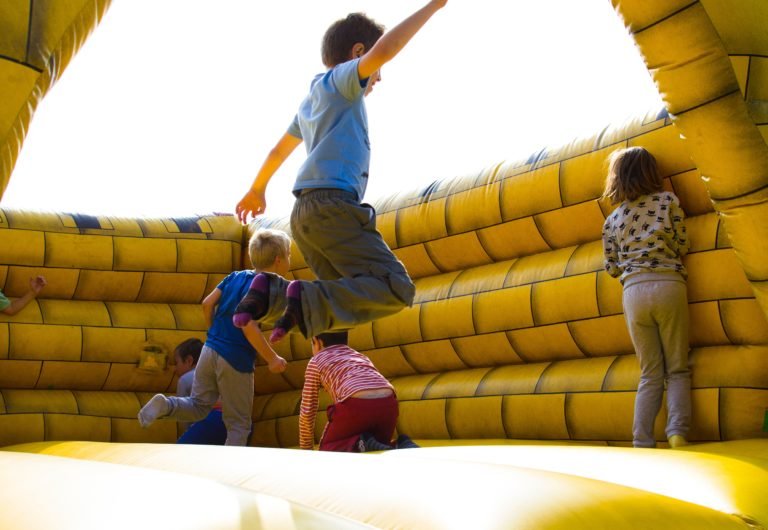There are several DIY sensory activities that can remediate the problem caused by the dysfunctional sensory system in Autism. The dysfunctional sensory system is a common symptom of Autism as well as other developmental disabilities. In this, sometimes one or more senses can either be hypo or hypersensitive to stimulation and can lead to behaviours like rocking, spinning, hand-flapping and also further causing irritability and hyperactivity.
The three basic senses that are critical for our survival- tactile, vestibular, and proprioceptive are briefly explained in this article as well as the DIY sensory activities targeting these sensory systems.
Sensory Integration techniques or therapies have shown evidence in facilitating attention, awareness as well as balancing the arousal levels of the sensory system in individuals with autism. In this article, each of these sensory systems will be covered. There also Do-it-yourself (DIY) activities mentioned to overcome such dysfunctions and improve the functioning of these three sensory systems in Autism.
A common list that targets the sensory system: tactile, vestibular, and proprioceptive, is given below:
DIY Sensory Activities for Autism
- Sensory bins filled with rice, flour, beans – Get Here
- Finger Painting
- Play with water beads – Get Here
- Play Dough (avoid this if the child tends to eat from the dough) – Get Here
- Riding bikes
- Jumping on Trampoline – Get Here
- Playing Hopscotch
- Playing Freeze Dance
- Carrying/Lifting boxes
- Tug-o-war
- Skipping rope – Get Here
The different sensory system tactile, vestibular, and proprioceptive, are further explained in this article. Moreover, the DIY autism sensory activities specific to these sensory systems are also enlisted.
TACTILE SENSORY SYSTEM
Misperception of touch, pain, temperature and pressure that leads to refusing to eat textured food, complaining about having one’s face or hair washed or wearing only certain type of clothes are common in the dysfunctional tactile sensory system. This may further lead to self-imposed isolation, general irritability, distractibility, and hyperactivity in children with autism.
DIY Sensory Activities that can improvise the Tactile Sensory System in Autism:
- Sensory bins filled with rice, flour, beans – Get Here
- Finger Painting
- Play with water beads – Get Here
- Play Dough (avoid this if the child tends to eat from the dough)- Get Here
VESTIBULAR SENSORY SYSTEM
Some children with autism may have fearful reactions to ordinary movement activities like swinging, sliding, walking on ramps or inclined planes. In addition, they may also have trouble learning to climb or descend down the stairs or hill. This manifestation is demonstrated in the hyper-reactive vestibular sensory system. While in the case of the hypo-reactive vestibular sensory system a child may seek very intense sensory experience such as excessive jumping, spinning or body whirling.
DIY Sensory Activities that can improvise Vestibular Sensory System in Autism:
- Riding bikes
- Jumping on Trampoline – Get Here
- Playing Hopscotch
- Playing Freeze Dance
PROPRIOCEPTIVE SENSORY SYSTEM
Under this type of sensory system, there is a serious difficulty in understanding where one’s body is in relation to other objects. Therefore, children with dysfunctional proprioceptive sensory system appear clumsy, knocking over things, dropping objects, stand to close to other or misjudge personal space. Sometimes, they can seek out for excessive sensory inputs by banging objects, stomp while walking, bumping into people, biting or sucking on fingers.
DIY Sensory Activities that can improvise Vestibular Sensory System in Autism :
- Carrying/Lifting boxes
- Kneading play dough (avoid this if the child tends to eat from the dough) – Get Here
- Tug-o-war
- Skipping rope – Get Here
Research studies (Schaaf et al, 2013) have shown that sensory integration therapy/techniques modulate the brain’s reaction to touch, sound, sight and movement thereby improving daily functioning in children with autism. These activities help the child organize sensory information in the central nervous system. It will also assist them in modulating or inhibiting sensory information. Moreover, the above mentioned DIY sensory activities for autism will assist the child in processing a better-organized response to sensory stimuli.
Sources: Schaaf, R. C., Benevides, T., Mailloux, Z., Faller, P., Hunt, J., Hooydonk, E. V., . . . Kelly, D. (2013). An Intervention for Sensory Difficulties in Children with Autism: A Randomized Trial. Journal of Autism and Developmental Disorders. doi:10.1007/s10803-013-1983-8 Autism and the seven senses: Proprioception (Body awareness). (n.d.). Retrieved from http://www.autismtogether.co.uk/portfolio-items/autism-and-the-seven-senses-proprioception/ (n.d.). Retrieved from https://www.autism.com/symptoms_sensory_overview



3 thoughts on “DIY Sensory Activities for Autism – Part 1 | MHT India”
Pingback: Helpful resources for Autism during Coronavirus Pandemic | Mental Health Today
Pingback: DIY Sensory Activities for Autism: Part 2 | Mental Health Today
Good article